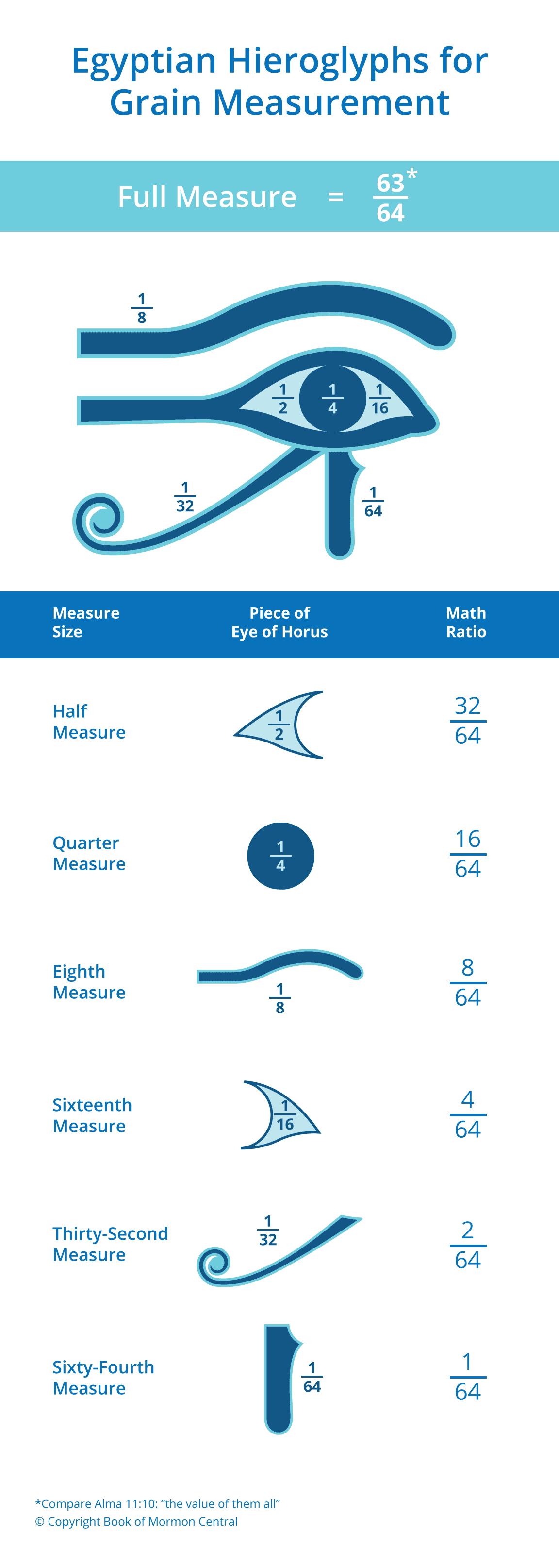
Share
Lesson 25-2: Egyptian Hieroglyphs for Grain Measurement

Title
Lesson 25-2: Egyptian Hieroglyphs for Grain Measurement
Publication Type
Chart
Year of Publication
2023
Authors
Welch, John W. (Primary), Welch, Greg (Primary), and Jasmin Gimenez Rappleye (Primary)
Number
25-2
Publisher
Scripture Central
City
Springville, UT
Share
Abstract
Egyptian hieroglyphs offer a parallel to King Mosiah’s monetary system. The grain measure in ancient Egypt was represented by the eye of Horus. Each part of the eye represented a fraction of the grain measure. There were six parts. The smallest measure was 1/64, represented by the tear duct; the next was 2/64, represented by the eyelash; and so on. The sum of all the parts equaled 63/64, which was considered the full measure. Mosiah's weights and measures were similarly exponential, with the largest equaling "the value of . . . all" (Alma 11:10) of the main lesser amounts. These similarities indicate that Nephite kings drew upon their Old World backgrounds well after their arrival in the New World.
Originally published as Chart 8-113 in Charting the Book of Mormon.

Subject Keywords
Grain
Weights and Measures
Language - Egyptian
Nephite Monetary System
Bibliographic Citation
Terms of use
Items in the BMC Archive are made publicly available for non-commercial, private use. Inclusion within the BMC Archive does not imply endorsement. Items do not represent the official views of The Church of Jesus Christ of Latter-day Saints or of Book of Mormon Central.